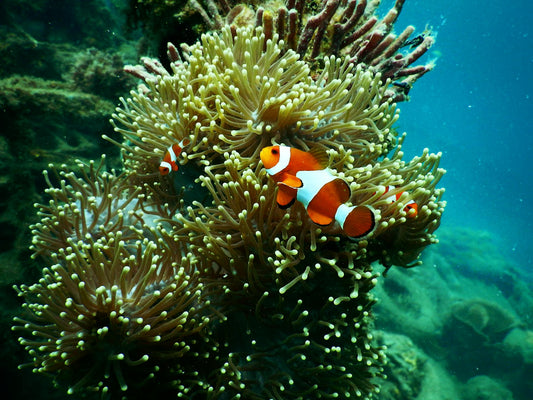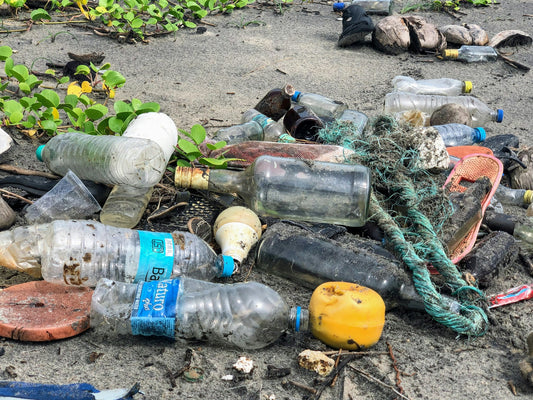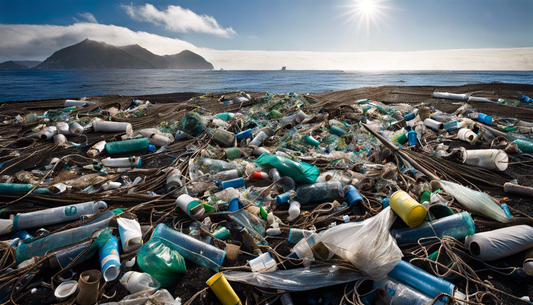Share
Consumers are becoming more aware of the terrible impact plastic has on our planet.
One of the biggest contestants to replace plastic for many products is paper. In many places, you will already find paper replacing straws, shopping bags, or food packaging.
The debate over whether paper is really better than plastic is complex and multifaceted. It involves considerations about raw materials, carbon emissions, and waste management.
Let us dive in and answer the question once and for all: Is paper really better than plastic? Spoiler Alert: "It Depends".
We will break it down into four categories. The environmental footprint, usability, cost and availability, and health impacts.
The first argument that any plastic advocate would give you against paper is its environmental footprint. And the argument is not entirely wrong.
Let's compare the two materials step by step.
Environmental Footprint Paper vs. Plastic

Neither paper production nor plastic production are a blessing for the environment. Let's check out the raw materials, production, and disposal for both materials.
Raw Materials
Paper is mainly made from renewable or recycled materials.
93% of paper pulp comes from trees, while the rest comes from other natural materials like cotton.
Around one third of that is actual trees, while two thirds come from recycled paper and wood scraps like wood chips from sawmills.
Deforestation is often the main argument against paper. There is an important point to note here though.
Estimates say that anything between 4-8 billion trees are cut down every year for paper production.
Luckily, 99% of those threes are grown as a crop and do not negatively affect the world's forests.
The main raw material for plastic on the other hand is fossil fuels (oil & gas).
Estimates say that around 8-10% of oil supply goes into plastic production and for plastic bags alone, we use 60 million barrels of oil worldwide.
Neither of the two materials is really convincing, but the fact that paper uses renewable resources gives it a small edge over plastic in this category.
Carbon Footprint
One of the other downsides of paper is a relatively high carbon footprint compared to plastic.
Unfortunately paper needs significant energy and has a higher carbon footprint than plastic. Compostable paper bags use 68% more and uncompostable bags 39% greehouse gases than paper.
That does not mean that plastic has a clean slate when it comes to carbon emissions though.
In fact, estimates show that the plastic industry contributes 2 billion tonnes to all global GHG emissions. That's almost 5%, making plastic production one of the major drivers of global warming.
Still, plastic wins this round.
Use of Chemicals
When it comes to chemicals, some sources cite that the production of paper bags actually produces 70% more air and 50 times more water pollutants than producing a plastic bag.
The plastic industry often uses this argument to advocate for plastic products. What they don't mention is how much of the chemicals actually leak into the envrionment.
For paper, most pollutants are generated during production, where they are filtered. At least in most countries of the developed world the production is subject to strict regulations.
With plastic on the other hand, a lot of the chemical risk stems from using plastic products and from littered plastic that releases chemicals, as it breaks down into microplastic.
Many concerning studies show the carcinogenic risks that these chemicals used in plastic entail.
Futhermore, we all remember the catastrophic train accident in East Palestine, Ohio in 2023. Highly toxic chemicals used for plastic production polluted the environment for generations to come.
It is also important to distinguish what kind of paper you are comparing to what kind of plastic. Paper staws for example have been introduced as eco-friendly alternative to plastic, but they contain potentially harmful chemicals to strengthen the material.
Kraft paper as another example includes significantly fewer chemicals and is more environmentally friendly compared to bleached or colored paper.
While this one is almost a tie, we still have to come across more studies that investigate the chemicals in paper.
Until then, paper wins this round by a small lead.
Disposal
While the match up between paper and plastic seem to be tie regarding chemicals, paper has an upper hand when it comes to disposal.
Paper comes from renewable resources. It is fully biodegradable, while plastic takes centuries to break down.
Last but not least, both paper and plastic can be recycled multiple times, but the actual recycling rate for paper is significantly higher.
Looking at the U.S. alone, paper has an astonishing recycling rate of 68% vs. ridiculous 9% for plastic.
The last round goes to paper!
Stay Aware, Educate Yourself, Listen to Your Gut
Consumers increasingly seek alternatives to single-use plastics.
The paper industry has positioned itself as one of the biggest opponest, sparking debate over paper's true environmental superiority.
While paper production raises concerns about deforestation and chemical use, it also emits significant greenhouse gases and pollutants.
On the flipside, paper's biodegradability and higher recycling rates give it an edge over plastic in disposal.
You're thinking: "So what the hell are you supposed to take away from this article then? Is paper more sustainable or not?"
Well... as we already mentioned in the introduction, it really depends. Both materials have their downsides and there is no clear answer.
As so often, the answer goes back to the many "Rs" that we've introduced on this blog.
Reduce consumption overall, Reuse packaging and bags you already have, Reject unnecessary pollution.
Only if you have to choose single-use items, help with Recycling.
Be creative and don't be afraid to listen to your gut if you do not have all the information.
A simple example from our daily life: We usually buy leftover fruits and veggies from the local grocer that come in a kraft paper bag.
We reuse that same paper bag as a compost bag instead of throing it away. That at least gives it a second purpose.
Of course it would be perfect to buy that same produce without a bag at all, but we're happy with the compromise and we will always prefer it over produce packed in plastic.
As a final verdict, you won't be surprised that we'll always choose paper over plastic, if we have to make a decision.
Despite its complexities, paper's renewable nature and recycling advantages make it the preferrable option in many cases.
What do you think? Paper or plastic? Feel free to leave a comment below.
We hope you enjoyed this article. If you want to read more like this, make sure to check out our Blog and follow us on Instagram. If you are interested in truly sustainable products, check out our Shop.








